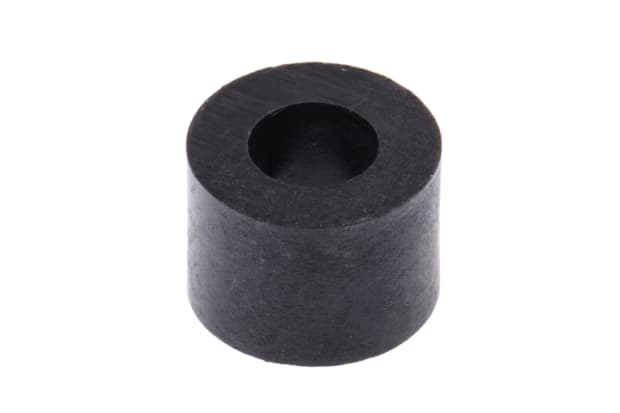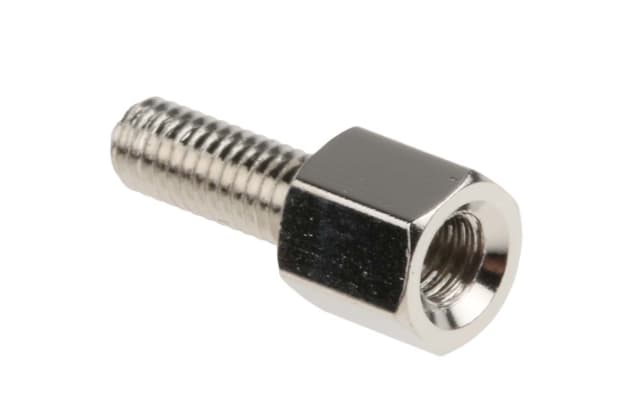- Published 17 Jan 2023
- Last Modified 29 Aug 2023
- 7 min
A Guide to Spacers and Standoffs
Our guide looks at the different types of spacers and standoffs and explains why you might want to use them.

Spacers and standoffs are important types of fastener accessories. They are used to create clearance gaps between two or more joined surfaces or components. This is crucial in various assemblies, especially PCB installations and other electrical builds. Spacers also enable the precise positioning of screws or bolts in parts and materials.
This guide to screw or bolt spacers is designed to give all the basic information you will need when choosing and buying spacers for screws online.
By the end of the guide, you will be familiar with exactly what the definition of a spacer is, and the technical differences between them and standoffs.
You will also know which materials are widely available for various spacer applications in the UK, and which are the best spacers or standoffs to buy for your needs.
What is the Function of a Spacer?

A screw spacer is a small hollow tube or cylinder. Using a spacer involves positioning it between the surface you are driving it into, and the head of a screw or bolt. In simple terms, using a spacer ensures that the screw or bolt cannot be driven all the way in.
The hollow body of a spacer is designed to allow the shaft of a screw to pass completely through it before entering the surface material. This forces a gap to be kept between the screw head and the material or component below, while still allowing the fastener to be properly torqued.
As well as creating a clearance gap, spacers can also assist with the precise positioning of screws and bolts. Most spacers are smooth on the inside and will remain free-spinning until clamped in place by tightening the screw.
Spacers are typically made of metal, but for certain jobs, you may need to use other spacer materials. Nylon is a common choice for spacers that need to be non-conductive. Depending on their intended use, they might also be listed as screw insulators for this reason.
What is the Function of a Standoff?

A standoff spacer, often referred to simply as a standoff, works in much the same way as a standard screw spacer. The main difference between a spacer and a standoff is that standoffs are also threaded at each end, while spacers typically are not.
This threading is gendered, meaning it can either be male (protruding) or female (internal). Available gender combinations for standoffs are male-male, female-female, or male-female.
A male-male standoff has two threaded protrusions and can be screwed into a hole at either end. A female-female standoff can accept a screw or bolt at either end. A male-female threaded standoff can be screwed into a hole at one end while having a screw inserted at the other.
This makes standoffs different to spacers, which are not driven into the material they are positioned against and are not threaded for accepting a screw either. A spacer, unlike a standoff, is generally held in place only by the torque force between the screw and the surface below.
How are Spacers and Standoffs Used?
Spacers and standoffs are a common standard for assembling circuit boards, gears, panels, doors, and other electronic components.
One of the most familiar uses of standoffs and spacers is in computing. Motherboard standoffs are almost always inserted between a PCB and the computer case or chassis. This helps to avoid short circuits (shorting) caused by motherboard traces coming into contact with other metallic parts or surfaces. It also aids cooling by enabling increased airflow around the motherboard and its mounted components.
Spacers are also widely used in various other applications, particularly mounting hardware. They help to achieve more precise positioning of screws and bolts, with adequate gaps left for airflow and cabling. Some bolt spacers also serve to make certain screw-in connections more robust.
There are various types of spacers and standoffs available to order online. They are generally cheap to buy and simple to use, provided you choose the right kind for your intended application.
When selecting these fasteners for a particular job, there are four main factors to consider:
- Spacer or standoff shape (usually round or hex, sometimes square)
- Body diameter (outer width)
- Body length
- Hole clearance width or thread size (inner diameter)
For standoffs, you will also need to bear in mind the length and thread size of the threaded section, as well as the gender of the threading at each end. In the following sections, we will briefly outline some of the basic options for standoff spacer shapes, sizes and materials.
Round Spacers
Round Spacers are commonly used in applications where the spacer will be visible after installation, as they tend to have a less industrial look than hex or square versions.
Similarly, metal spacers are often preferred for improved aesthetics, although round nylon or plastic spacers, brass spacers, and round aluminium spacers are also widely available.
It’s very common, for example, to find stainless steel round spacers used on bolts and screws in TV mounting hardware and other on display assemblies.
Hex Spacers
Hex Spacers are hexagonal, with flattened sides to help with torque. They are commonly chosen for internal uses (i.e. behind panels or in cases) that will be largely hidden from view, as they are generally deemed less aesthetically pleasing than round spacers.
Hex standoffs are more common than hex spacers and are often found in circuit board assemblies. Many device motherboard installations rely on threaded hexagonal standoffs to create elevation and separation between PCBs and outer cases.
They are available in a wide range of sizes and thread gauges, with some of the most common being M3 standoffs, M4 standoffs, M5 hex standoffs, and M8 threaded standoffs.
Switch Spacers
Nylon or plastic switch spacers, such as RX8 wheel spacers, can be used in certain rotary power switch shaft assemblies. They are often a go-to method for creating separation between wafers and screens in a rotary or dimmer switch.
However, it is worth noting that searching for switch spacers will more commonly yield results linked to installing a switch surround or housing into a wall recess. This is a different type of spacer that is not relevant to the screw spacer or standoff product category.
What Spacer Materials are Available?
By far the most common spacer material is metal, but plastic spacers are also useful in certain applications.
Brass Spacers
Brass spacers are often used where a conductive, non-magnetic, corrosion-resistant material that can be soldered for grounding is needed. Brass is more commonly seen in standoffs than in spacers, although brass spacers may be preferred for aesthetic reasons.
Brass standoffs and spacers are heavier and more robust than most aluminium versions. They might be zinc or nickel-plated and are generally seen as a higher quality alternative to various cheaper metals.
Stainless Steel Spacers
Stainless steel spacers and standoffs are widely used in assemblies where optimal corrosion resistance is important. Often zinc-plated for even better anti-corrosive properties, they are conductive and non-ferrous, as well as being very strong.
Stainless steel tube spacers are often preferred for visible mounting solutions as they remain looking pristine for extended periods. Tubular steel spacers are heavier, more durable, and typically more expensive than aluminium equivalents.
Aluminium Spacers
Aluminium standoffs and spacers are a cheap, lightweight and durable alternative to brass or stainless steel metal spacer tubes. Of all the widely available spacer materials, aluminium spacers tend to have the highest weight-to-strength ratio. They are also non-magnetic and perform well as an insulator, in addition to coping well in high-temperature applications.
Nylon Spacers
Nylon spacers or washers are often the best choices where complete electrical insulation is required, offering some of the best non-conductive properties of all the available standoff materials. It is also incredibly lightweight for its overall strength, although it can be prone to shearing in high torque installations. While nylon is highly chemical resistant, it is less suitable for use in damp or humid environments, due to its tendency to absorb moisture over time.
Ceramic Spacers
Ceramic spacers provide impressive insulating properties. While they are less commonly found in typical electronics or mounting assemblies, they are often required in certain industrial or mechanical settings. A ceramic spacer may be essential where non-conductive performance under severe temperature loads is needed.

